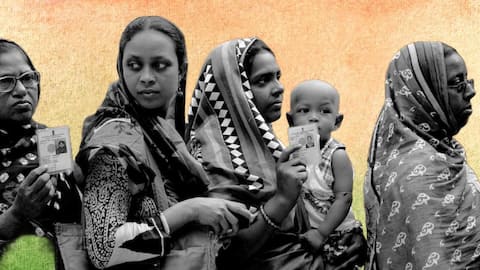The evolution of political participation in India
What's the story
India's journey of political participation is a tale of vibrant democracy, struggle, and evolution. From the colonial period to the establishment of the largest democracy in the world, the country's political landscape has undergone profound transformations. This has allowed a diverse population to transition from being mere spectators to active participants. Let's explore how political participation has unfolded in India so far.
Colonial era
Pre-independence era: Stirrings of political consciousness
The roots of political participation in India were established during the colonial period with the formation of the Indian National Congress (INC) in 1885. Originally a platform for the elite to voice concerns, the INC transformed into a mass movement under Mahatma Gandhi's leadership. Gandhi's strategy of satyagraha, or non-violent resistance, expanded the struggle for independence, involving widespread public participation.
Voting rights
Post-independence: Framing a democratic India
The drafting of the Indian Constitution was a pivotal moment in institutionalizing the fundamental rights of citizens to participate in governance through universal adult suffrage. It shattered entrenched barriers of caste, creed, and gender, extending voting rights to every adult citizen. This progressive stance was particularly remarkable given the significant illiteracy rates and the immense diversity characterizing the nascent nation.
Voter turnout
Electoral politics and the evolution of participation
India's electoral system, managed by the Election Commission, is a vast democratic exercise. Starting with the first general elections in 1951-52 where 173 million participated, India has seen regular elections with growing voter turnout. Innovations like electronic voting machines and voter-verifiable paper audit trails, have improved transparency and accessibility, reflecting an increasing public trust in the electoral process.
Social media
The digital era and political participation
The advent of digital technology has transformed political participation. Social media platforms have become powerful tools for political campaigning and public discourse. The 2014 general elections, termed as India's "first social media election," saw extensive use of digital platforms for campaigning. The digital age has made politicians more accountable, with real-time governance and public feedback via platforms like Twitter and Facebook.
Activism
Civil society and movements
Apart from electoral politics, India has a rich history of non-electoral participation through activism and grassroots movements. Movements such as the "Chipko Movement" in the 1970s, the Narmada Bachao Andolan led by Medha Patkar, and the recent anti-corruption movement by Anna Hazare have engaged ordinary citizens directly in the political process, influencing policies and legislation.
